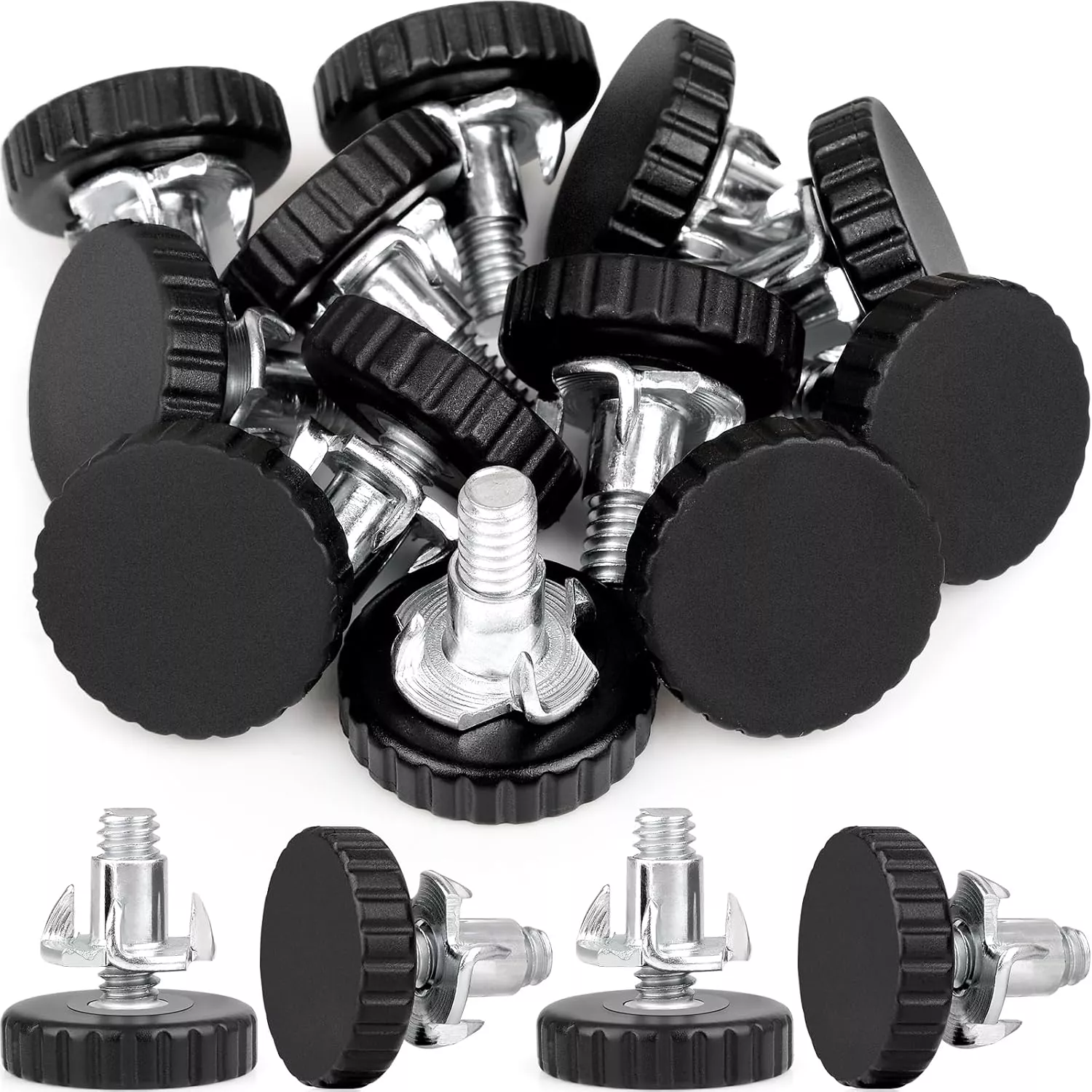
Are you tired of using crumpled cardboard to keep your furniture steady? The Anwenk Furniture Leveling Feet offer an effective solution to create stability and prevent wobbling. In this article, I’ll explore the features, benefits, and practical applications of these adjustable furniture levelers to enhance your home experience.
Product Features
| Feature | Specification |
|---|---|
| Type | Adjustable Furniture Leveling Feet |
| Brand | Anwenk |
| Material | Galvanized Steel and Nylon |
| Height Adjustment | 1/4″ to 3/4″ |
| Load Capacity | Over 200 pounds per leveler |
| Installation Method | Screw-in with T-nuts |
| Base Diameter | 1″ |
| Thickness | 1/4″ |
| Package Size | 12 Pack |
Product Overview
| Pros | Cons |
|---|---|
| Easy installation with screw-in design | Requires wood leg diameter to exceed 1″ |
| High load-bearing capacity for stability | Not suited for metal furniture without professional help |
| Adjustable height for various furniture needs | Risk of cracking if not installed carefully |
Understanding the Necessity of Furniture Leveling
When it comes to installing Anwenk Furniture Leveling Feet, you’ll want to start by gathering a few essential tools: a screwdriver, a measuring tape, and a level. Having these on hand will make the process smoother.
First, turn your furniture upside down to access the legs. Measure the height difference between the legs using your measuring tape; this will guide you in adjusting the leveling feet correctly. Next, attach the leveling feet. Most Anwenk models come with a threaded insert that screws into the bottom of each leg. If your furniture lacks pre-drilled holes, simply drill them according to your measurements.
It’s crucial to adjust each foot to the required height. Once attached, place your furniture back upright and use the level to ensure it sits evenly. If it wobbles, make minor adjustments to the leveling feet until you achieve stability.
Regular maintenance is key to ensuring their longevity. Periodically check that the feet remain tightly secured and adjust them as needed, especially if your floor shifts or your furniture settles over time.
By following these guidelines, you can avoid complications and enhance your furniture’s stability, providing a solid foundation that contributes to a smooth and comfortable experience in your home or workspace.
Installing and Maintaining Your Leveling Feet
Installing Anwenk Furniture Leveling Feet is a straightforward process that can enhance the stability of your furniture significantly. To get started, gather the necessary tools: a measuring tape, a pencil, a power drill, and a screwdriver. First, make sure to assess the height difference between the legs of your furniture. Doing this ensures that you cut your leveling feet to the correct size. Measuring accurately will help avoid issues later on.
Next, use the power drill to attach the leveling feet to the bottom of each leg. Make sure to follow the manufacturer’s instructions closely to prevent complications. Position the foot and ensure it’s aligned correctly before securing it tightly with the screws. I recommend adjusting the feet slightly after installation to ensure they make full contact with the floor. This not only stabilizes your furniture but also prevents damage to your flooring.
Maintaining your leveling feet is equally important. Periodically check for any wear and tear, and tighten screws if necessary to keep everything secure. If you notice any wobbling or unevenness over time, simply readjust the feet. Keeping the feet clean and free of debris will also prolong their life. Following these steps diligently will guarantee that your furniture remains stable and functional for years to come.
Conclusions
The Anwenk Furniture Leveling Feet provide a practical solution to stabilize furniture while protecting your floors from scratches. With easy installation and impressive load capacity, these leveling feet are a must-have for anyone seeking a flawless finish in their living space. Invest in this tool to enhance your furniture experience and enjoy a level, steadier lifestyle.